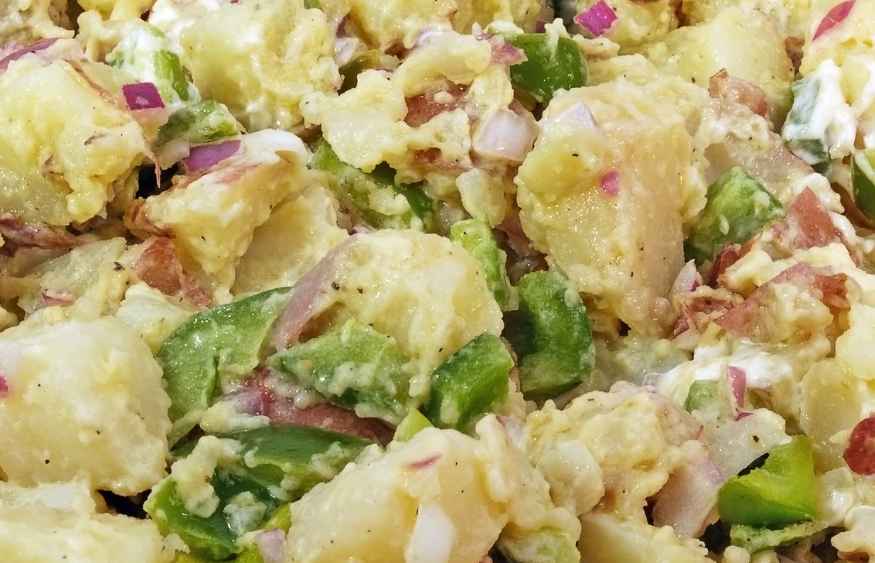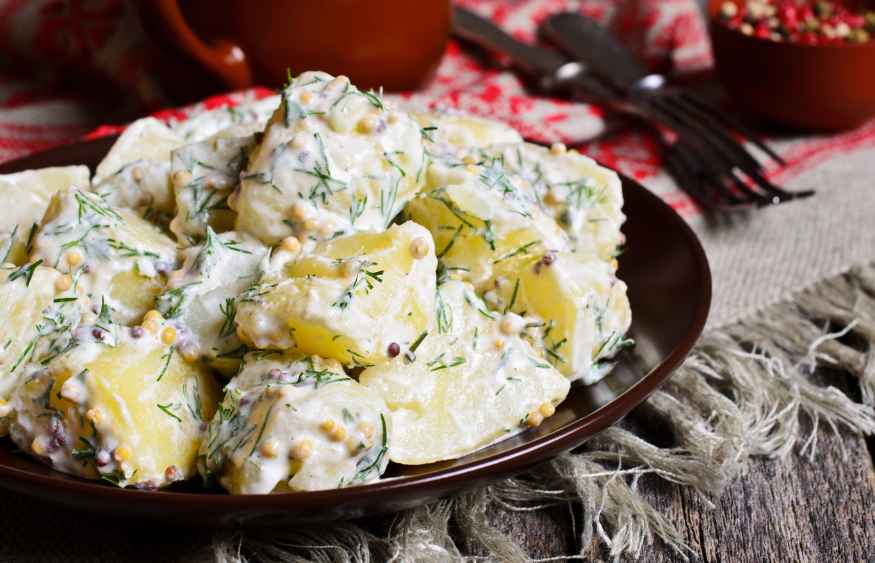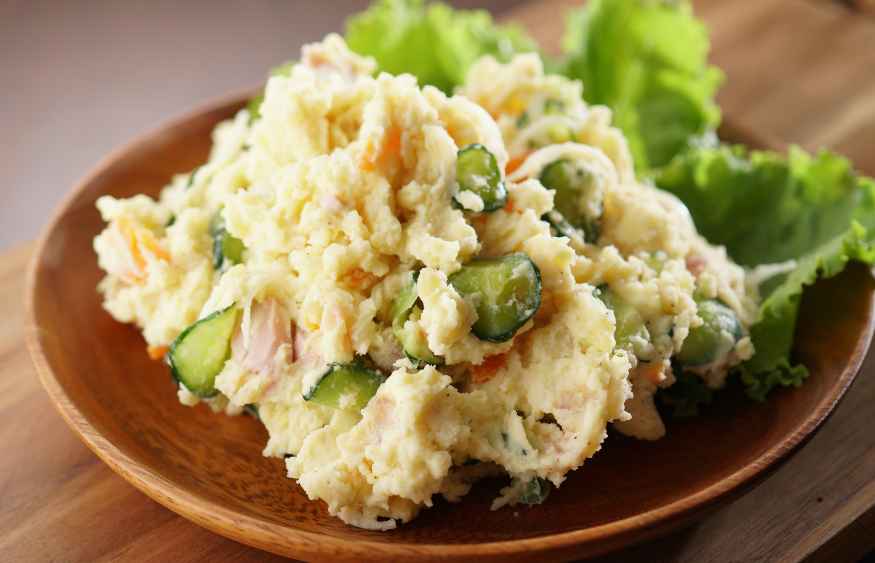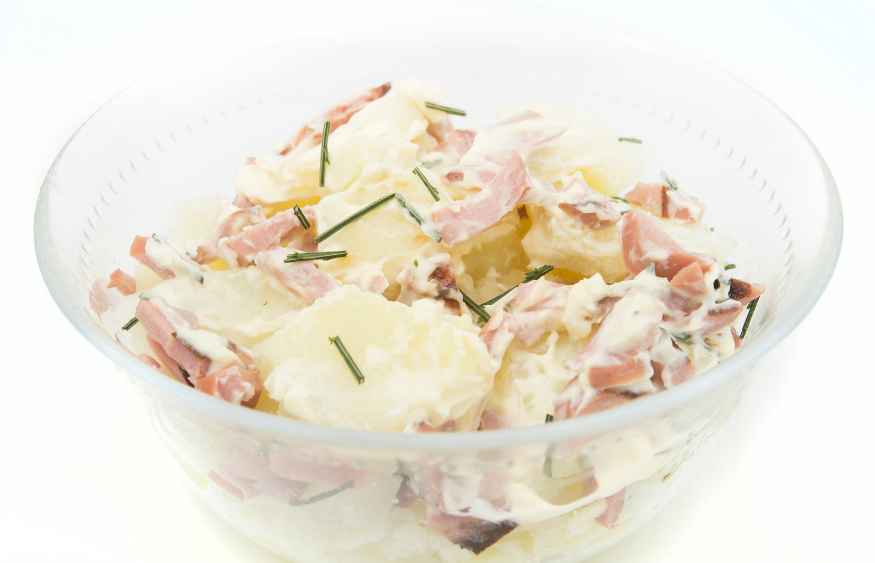Introduction
Brief history of German Kartoffelsalat
German Kartoffelsalat, or potato salad, is a culinary classic with a rich history that dates back centuries. The potato, originally from South America, was introduced to Europe in the 16th century and became a staple in German cuisine by the 18th century. Kartoffelsalat soon emerged as a popular and versatile dish, with regional variations reflecting the diverse culinary traditions found throughout the country.
Regional variations and their importance
Germany's diverse culinary landscape has given rise to several distinct styles of Kartoffelsalat. Two primary styles dominate the scene: Southern German (Swabian) and Northern German. Each style has its unique ingredients and preparation methods, creating distinct flavor profiles that showcase the creativity and resourcefulness of German cooks.
Popularity in Germany and around the world
Kartoffelsalat is more than just a beloved German dish. Its popularity has spread around the globe, with adaptations and variations emerging to cater to local tastes and dietary preferences. The dish's versatility and crowd-pleasing flavors have secured its place as a favorite at picnics, barbecues, and holiday gatherings worldwide.
Ingredients
List of essential ingredients
1. Potatoes
The star of the show, potatoes, are a key ingredient in any German potato salad. Waxy potatoes, such as Yukon Gold, are preferred for their firm texture that holds up well when cooked and mixed with other ingredients.
2. Dressing
The dressing is the heart of the dish, and its composition varies depending on the regional style. Southern German Kartoffelsalat often features a vinegar-based dressing, while Northern German styles use mayonnaise or a combination of mayonnaise and yogurt.
3. Other ingredients
Additional ingredients may include onions, pickles, bacon, mustard, and fresh herbs like parsley and chives, depending on the recipe and personal preferences.
Selection and preparation of ingredients
1. Choosing the right potatoes
Selecting the right potatoes is crucial for a successful Kartoffelsalat. Waxy potatoes like Yukon Gold, Charlotte, or Red Bliss are ideal choices. They hold their shape and texture when cooked and absorb the dressing without becoming too mushy.
2. Preparing the dressing
Whether making a vinegar-based dressing or a mayonnaise-based one, it's essential to combine the ingredients well to ensure a balanced and flavorful result. Gradually adding oil to the vinegar mixture or whisking the mayonnaise with other ingredients helps create a smooth, emulsified dressing that clings to the potatoes.
3. Other ingredient options and their significance
While the core ingredients remain the same, variations in other ingredients can change the flavour profile of the salad. For example, adding bacon can give the dish a smoky, savoury touch, while fresh herbs like parsley and chives lend brightness and contrast.
Traditional recipes
Southern German (Swabian) Kartoffelsalat
1. Description
This regional variation of Kartoffelsalat is characterized by its tangy, vinegar-based dressing and the absence of mayonnaise. It often includes thinly sliced onions and a touch of mustard for added depth of flavour.
2. Ingredients
- Waxy potatoes
- White wine vinegar
- Vegetable oil or sunflower oil
- Vegetable or chicken broth
- Onions
- Mustard
- Salt and pepper
- Fresh parsley
3. Preparation
- Boil the potatoes with their skins on until tender. Allow them to cool, then peel and slice them into thin rounds. 2. Thinly slice the onions and set aside.
- In a separate bowl, whisk together the vinegar, oil, broth, mustard, salt, and pepper until well combined.
- In a large mixing bowl, gently toss the sliced potatoes with the dressing, ensuring even coverage.
- Fold in the onions and chopped parsley.
- Cover and refrigerate for at least 2 hours, or preferably overnight, to allow the flavours to meld.
- Serve chilled or at room temperature, garnished with additional fresh parsley if desired.
Northern German Kartoffelsalat
1. Description
Northern German Kartoffelsalat is distinguished by its creamy, mayonnaise-based dressing. It often includes pickles, bacon, and sometimes hard-boiled eggs, resulting in a rich and satisfying dish.
2. Ingredients
- Waxy potatoes
- Mayonnaise (or a combination of mayonnaise and yogurt)
- Pickles
- Bacon
- Onion
- Mustard
- Salt and pepper
- Fresh chives
3. Preparation
- Boil the potatoes with their skins on until tender. Allow them to cool, then peel and cube them.
- Cook the bacon until crispy, then chop or crumble it into small pieces.
- Finely dice the onion and pickles.
- In a separate bowl, mix together the mayonnaise, mustard, salt, and pepper.
- In a large mixing bowl, gently combine the cubed potatoes with the dressing.
- Fold in the bacon, onion, pickles, and chopped chives.
- Cover and refrigerate for at least 2 hours to allow the flavors to meld.
- Serve chilled or at room temperature, garnished with additional fresh chives if desired.
Other regional variations
1. Description
There are many other regional variations of Kartoffelsalat, each with its unique combination of ingredients and preparation methods. Some examples include the addition of radishes, apples, or cucumber for extra texture and flavor.
2. Ingredients
- Waxy potatoes
- Regional-specific dressing (e.g., vinegar-based, mayonnaise-based, or oil-based)
- Additional ingredients such as radishes, apples, or cucumber
3. Preparation
- Prepare the potatoes according to the chosen variation (boiled and sliced or cubed).
- Prepare the dressing and any additional ingredients specific to the regional variation.
- Combine the potatoes, dressing, and additional ingredients in a large mixing bowl, ensuring even coverage.
- Cover and refrigerate for at least 2 hours to allow the flavors to meld.
- Serve chilled or at room temperature, garnished with fresh herbs or other toppings as desired.
Modern twists and adaptations
Vegan and vegetarian options
To create a vegan or vegetarian version of Kartoffelsalat, simply omit the bacon and use vegetable broth in the Southern German version. For the Northern German version, use a vegan mayonnaise or yogurt substitute.
Gluten-free and other dietary modifications
To make a gluten-free Kartoffelsalat, ensure that all ingredients, including the mustard and any broth used, are gluten-free. For other dietary modifications, adjust the ingredients and quantities as needed to accommodate specific requirements.
Creative ingredient additions and substitutions
Experimenting with different ingredients can add unique flavours and textures to your Kartoffelsalat. Some ideas include using sweet potatoes, adding capers or olives, or incorporating roasted vegetables like bell peppers or zucchini.
Fusion recipes with international influences
Fusion recipes that incorporate flavours and ingredients from other cuisines can elevate your Kartoffelsalat to new heights. For example, you could add a Mediterranean twist with sun-dried tomatoes, feta cheese, and olives, or create an Asian-inspired version with sesame oil, soy sauce, and a touch of sriracha for heat.
Pairings and serving suggestions
Traditional German dishes
Kartoffelsalat is often served alongside traditional German dishes like bratwurst, schnitzel, or sauerbraten. Pairing it with such dishes creates a hearty, satisfying meal that showcases the best of German cuisine.
International dishes
This versatile dish complements a wide range of international dishes, such as grilled meats, fish, or vegetarian options. Try serving it with barbecued ribs, grilled chicken, or a hearty bean salad for a delicious fusion of flavours.
Seasonal recommendations
Kartoffelsalat is a year-round dish that can be adapted to suit the season. In the summer, serve it chilled alongside grilled meats and vegetables at a barbecue or picnic. During the colder months, pair it with roasted meats and root vegetables for a comforting, hearty meal.
Storage and reheating
Tips for storing leftovers
To store leftover Kartoffelsalat, transfer it to an airtight container and refrigerate for up to 3-4 days. Avoid freezing, as the texture of the potatoes may become mushy upon thawing.
Reheating instructions
Although Kartoffelsalat is typically served chilled or at room temperature, you can gently reheat it in the microwave or on the stovetop over low heat if desired. Be careful not to overheat, as this may cause the potatoes to become too soft.
Shelf life and food safety
For optimal freshness and food safety, consume leftover Kartoffelsalat within 3-4 days of preparation. If the salad contains ingredients like mayonnaise or bacon, be especially vigilant about proper storage and refrigeration.
Cultural significance and celebrations
Kartoffelsalat in German cuisine
Kartoffelsalat holds a special place in German cuisine, as it showcases the country's love for potatoes and its diverse culinary traditions. This versatile dish can be found in homes and restaurants throughout Germany, where it is enjoyed by people of all ages.
Role in holidays and family gatherings
In Germany, Kartoffelsalat is a popular choice for holiday meals and family gatherings. Its comforting flavors and satisfying texture make it the perfect accompaniment to festive occasions, bringing people together to enjoy a delicious, home-cooked meal.
German potato salad festivals and competitions
Some regions in Germany celebrate the beloved Kartoffelsalat with festivals and competitions, where local cooks showcase their skills and creativity in crafting the best potato salad. These events not only celebrate the dish itself but also foster a sense of community and appreciation for German culinary traditions.
Conclusion
The enduring appeal of German Kartoffelsalat
German Kartoffelsalat has stood the test of time, remaining a beloved dish throughout Germany and around the world. Its versatile nature and crowd-pleasing flavors make it a staple in kitchens and dining tables everywhere.
Embracing tradition and creativity in the kitchen
Whether you choose to prepare a traditional recipe or experiment with modern twists, Kartoffelsalat offers a canvas for both tradition and creativity. Explore regional variations, adapt the dish to suit dietary needs, or mix in new ingredients to create your unique and delicious Kartoffelsalat masterpiece.
Encouragement
With this comprehensive guide, you now have all the information you need to create your own delicious German Kartoffelsalat. Whether you're a novice cook or a seasoned chef, we encourage you to try your hand at making this classic dish and enjoying the rich flavors and textures it has to offer. Bring a taste of Germany to your home, and share this delightful culinary tradition with family and friends. Happy cooking and guten Appetit!
Now learn about German sauerkraut and also Red Cabbage or Rotkohl.
Resources
https://www.tasteatlas.com/
https://en.wikipedia.org/
https://ilikegermany.com/
https://morethanbeerandschnitzel.com/
https://www.curiouscuisiniere.com/





